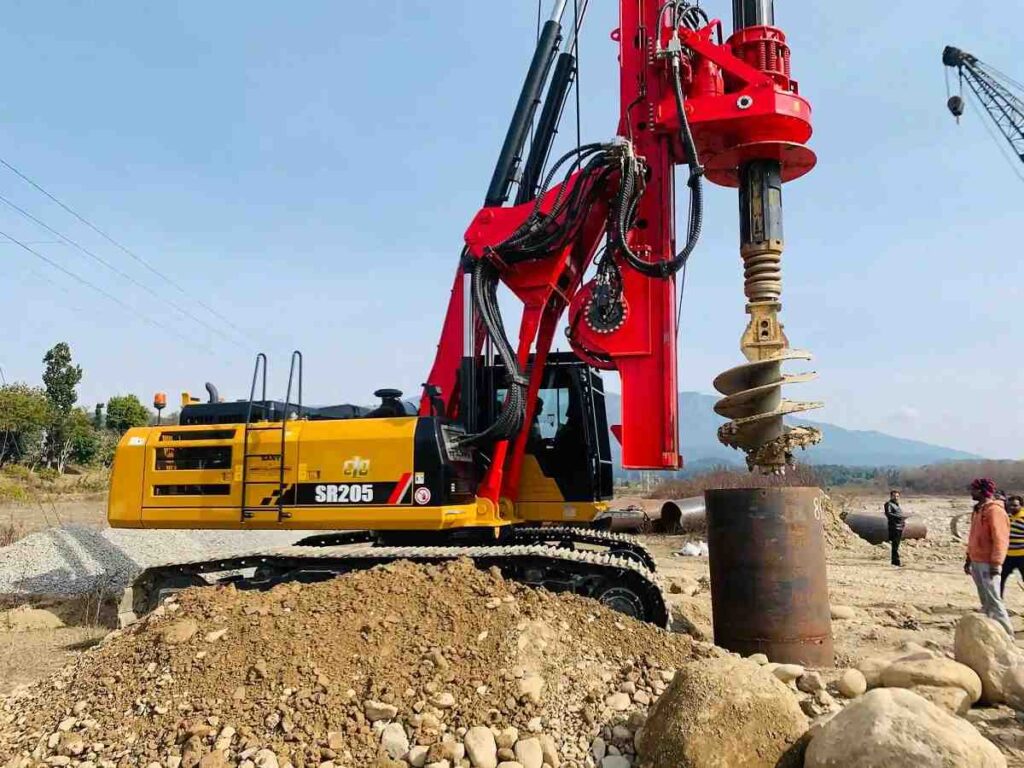
Overview of Mini Piling
The process of mini-piling involves small-diameter piles that enhance the stability of your building. Mini piles usually range between 100mm and 300mm. These piles consist of concrete, steel, and timber material. Mini piles are drilled beneath the ground to strengthen the entire building structure.
The mini piling process is suitable for confined areas, low-headroom projects, urban sites, and underpinning structures. Choosing the best mini piling contractor is essential for your projects, as they assess the site conditions and design the piles according to the soil’s condition.
Mini Piling VS Traditional Piling
If we evaluate the functionality of the mini piling process as compared to the traditional piling method, it is a versatile and durable solution. Mini piling is best for the restricted areas, basements, complex projects and underground piling where traditional doesnot support. Mini piling is a faster process and provides less disruption to the environment. It requires fewer and specialised tools that provides stability to the buildings.
As compared to mini piling, the traditional method also provides a robust structure for various structures. This process requires heavy tools that increase the cost of labour and material. Traditional piling consumes more time and disruptions as compared to the mini piling process.
Advantages of Mini Piling
- Minimal disturbance: Mini piling causes less distortion to nearby buildings during installation. It produces less noise and minimal damage to the surrounding soils and environment.
- Cost efficiency: The mini-piling process is cost-effective due to its high-loading capabilities. It doesnot requires much resources and efforts that helps to saves your money and time.
- Speedy installation: Depending on the soil’s condition, the mini piling process requires less time for installation as compared to other piling methods.
- Versatile solution: Mini piles are versatile because they are designed according to the underground conditions.
- LessExcavation: Mini piling requires less excavation as compared to traditional piling. Less excavation requires less disturbance to other structures.
Methods of Mini Piling
Mini piling consists of some mini piling methods that can be chosen according to the soil’s condition:
Bottom-driven piling
This piling process is a method of pile installation, where a steel tube is drilled underground by using the internal drop hammer. This piling process is driven between the lengths of 2m and 6m. Casing is further added and welded to these tubes. After that, tubes are filled with concrete grout and a cage is inserted into them.
Auger Piling (Continuous Flight Auger)
Auger piling consists of screw-like equipment that rotates beneath the ground. When the auger reaches a specific length, grout is pumped through the hollow. A reinforcement cage is then placed into the concrete. This piling is ideal for noise issues, built-up areas, and sensitive sites.
Sectional Flight Auger Piling
This piling is suitable for the low-headroom projects and restricted areas where CFA is not suitable. This technique can add and remove the augers or can use the temporary casing to reach the desired depth. It is a fast technique that produces low noise and vibrations. It is cost effective and versatiles that can be used on various soil condition.
Applications of Mini Piling
Mini is typically used to strengthen the foundation, which can be used in diverse projects:
- Underpinning sites: If you want to increase the load-bearing capacity of any existing building, mini piling is a suitable solution for you.
- Restricted workspace: Mini piling is used in restricted areas such as basements or other challenging sites where traditional piles are not suitable.
- Retaining walls: Mini piling can be used to reinforce the retaining walls and slopes.
- Waterfront sites: You can use mini-piling to reinforce seawalls, docks, and other structures constructed near the coast.
- Renovation projects: Mini piling used to stabilise the under-construction building.
Conclusion
Every construction project relies on its foundation because a strong base increases the longevity of your building. This process is guaranteed to provide stability to your structures and is more effective than other piling methods. Southern Foundations & Piling is a cost-effective and durable solution for your construction projects.


